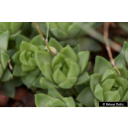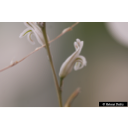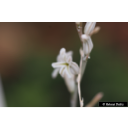Wissenswertes zu diesem Pflanzenindivuduum
Haworthia cymbiformis (Haw.) Duval var. cymbiformis 1809
Asphodelaceae
- Affodillgewächse (APG IV)Akzessionnummer: Gew-15444
Pflanzjahr: 0
Taxonkonzept: Plants of the World Online
Verbreitung: Südafrika (südliche und südöstliche Kap-Provinz)
Haworthia cymbiformis (Haw.) Duval - Accepted: Haworthia cymbiformis (Haw.) Duval bei The Plant List (2014), version 1.1; Familie: Xanthorrhoeaceae (APG III)Haworthia cymbiformis (Haw.) Duval var. cymbiformis - Accepted: Haworthia cymbiformis (Haw.) Duval var. cymbiformis bei Zander 2008; Familie: Asparagaceae (Zander 2008)Haworthia cymbiformis (Haw.) Duval var. cymbiformis - Synonym: Haworthia cymbiformis (Haw.) Duval bei The Plant List (2014), version 1.1; Familie: Xanthorrhoeaceae (APG III)Haworthia × cuspidata Haw. - Accepted: Haworthia × cuspidata Haw. bei Zander 2008; Familie: Aloaceae (APG II)Haworthia × cuspidata Haw. - Synonym: Haworthia cuspidata Haw. bei The Plant List (2014), version 1.1; Familie: Xanthorrhoeaceae (APG III)Haworthia cuspidata Haw. - Accepted: Haworthia cymbiformis (Haw.) Duval bei The Plant List (2014), version 1.1; Familie: Xanthorrhoeaceae (APG III)Haworthia cymbiformis (Haw.) Duval - Accepted: Haworthia cymbiformis (Haw.) Duval bei The Plant List (2014), version 1.1; Familie: Asphodelaceae (APG IV)
Erhardt, W., Götz, E., Bödeker, N. & Seybold, S. (2008): Der große Zander. Enzyklopädie der Pflanzennamen. Band 2. Arten und Sorten. Eugen Ulmer KG, Stuttgart (Hohenheim), 18. Aufl., 2103 S.; The International Plant Names Index (2009). Published on the Internet http://www.ipni.org; Courtesy to IPNI, 2009. Exported from IPNI at date: 2009-09-22 20:17:51;
Diese Webseite verwendet Google Maps, um Karten und Standorte von Pflanzen in den Hohenheimer Gärten anzuzeigen. Dadurch werden unter Umständen Daten an Google weitergeleitet, was mit einer Verarbeitung Ihrer personenbezogenen Daten verbunden sein kann. Die Datenschutzerklärung von Google finden Sie hier: Datenschutzerklärung von Google



